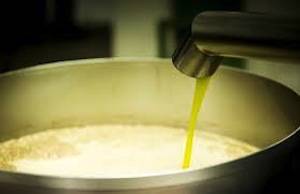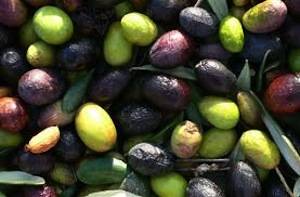Tradition & New Practices: a Marriage in the Production of Olive Oil
In March 2013 at the New York Wine Expo, the Italian Trade Commission presented a much anticipated Italian Pavilion at the Jacob Javitz Center Galleria. Over 8,000 consumers, trade representatives and members of the press flocked to the Expo to experience and certainly indulge in a taste of authentic Italy. At the Expo i-italy got a chance to speak with Nazzareno Callipo, owner of Gourmet Cooking & Living, a leading destination for fine Mediterranean products, host of the Olive Oil and Cheese of the Month Clubs (members have the finest olive oils and/or cheeses delivered to their home every month or every other month) and a spot for people who enjoy cooking, eating, entertaining and living a ... " gourmet life."
“I was born and grew up in Vibo Valentia, on the west coast of Calabria, but I have been living in NY for the last 10 years. I am an environmental engineer and I opened Gourmet Cooking and Living 4 years ago to maintain a link with my country, perhaps the most popular link, food, and with it its traditions that in Italy vary from town to town. I've always had a soft spot for Italian cuisine and above all a passion for olive oil, since I was a child. My family grows olives and produces oil, for personal use, for generations, and I learned about the oil and its plants from them. Since the climate in New York does not allow to cultivate olive trees, I thought that the import of olive oil and promotion of our ancient culture could be an excellent alternative.”
One of the purposes of being at the Expo, was the continuous promotion of authentic Italian foods and their higher quality. And great quality in the production of olive oil is achieved when Tradition and New Practices come together. Let's discuss that with Nazzareno.
New World vs. Old World production, the characteristics of each:
Old World production is driven by the geography of the land and tradition of the people that have lived in it for thousands of years. Products and processing techniques have developed over time, generation to generation, dictated by the needs of a specific area and its people, and were based on a perfect combination of climate and soil conditions, and local resources. The New World is taking the Old World recipes and techniques and adapting them to create products at a larger scale to satisfy the increasing consumer demand. Most of the New World production is driven by investors who are solely looking at the demand of the marked and try to make a profit satisfying it. Additionally, in the Old World, the production of specific products can be regulated by protocols such as DOP, DOC, IGP, etc. which are not meant to satisfy the palate of consumers or the business needs of investors, but to respect the traditions and the typicality that are found in a specific geographical area. These type of protocols are not developed yet in the New World.
Can the two worlds come together and how?
In my opinion the two worlds will come together at some point, or at least will come very close. They are already getting closer, as the New World is building traditions and history for itself and the Old World is adopting New World business models and techniques to increase the volume to satisfy the growing demand. However, today in the Old World the link to the territory and its traditions is still predominant while New World techniques find limitations.
How have new practices and technology improved olive oil?
To better understand this question, I think it’s important to first describe how the quality of an olive oil is defined. Olive oil has become so important for our diet because of its health benefits related mostly to polyphenol content. Polyphenols are antioxidants that assist in slowing the aging process of the human body. Therefore one of the things that we should consider in a good olive oil is its amount of polyphenols: the higher the better. Besides the health aspect, the quality of olive oil is also linked to the perception of the smell and taste. A good extra virgin olive oil at the least should be pleasant, without any smell of rancid or mold, should have a grassy smell and a taste of olives.
In addition to the above, to understand this concept, we should briefly explain the production process of Olive Oil. Unlike wine, olive oil is best when it is fresher and doesn’t require aging. It is at its best when it’s still inside the fruit, on the tree, and the fruit is still green. That’s the moment when polyphenols are at the highest concentration. From that moment quality declines after each step of the production process, from the harvest to the press, and the preservation. That’s why it’s so important that all the steps are done with the most care, to extract the oil with the minimum losses. The first and most important factor is the time in which the olives are harvested: a late harvest may induce ripened olives and/or weather damaged olives.
The second important step is the harvesting method, which could be by hand or by machinery. In both cases it’s important to protect the olives from being damaged. Small cuts on the olives allow for micro leakage of olive oil that oxidizes and deteriorate the olives. The degradation of the product continues for the entire time until the olives are pressed. For this reason it’s important that the olives are pressed as quickly as possible after the harvest.
The extraction process is also very important and it can damage the quality of the oil significantly if not done properly. Several steps are involved: leaf removal, washing, pressing, kneading, and separation. Finally, preserving it in the proper container, at the proper temperature, and light conditions, would slow down the oxidation process and allow the olive oil to keep its organoleptic properties longer. Each of these steps is critical in the final result and taste the Extra Virgin Olive Oil. With the concept of the minimum losses in mind, over time new practices and technologies have been developed to reduce the damage to the fruit and to improve the quality of the final product: from gentle and fast harvesting practices, to low-temperature extraction systems, to storage without air to prevent oxidation. This is how research and development have helped traditions in creating a better product.
Are there producers who are refusing to adopt new technology?
Yes, but for the most part just because they choose to make a product at a lower price, primarily sold at the source in bulk, for either a local market, for bigger companies that will sell it under their own label, or ultimately to other companies that will refine it and use for other purposes.
What are the regions that are more modern? and who stayed behind?
I like to say that all regions of Italy have caught up in terms of technology and practices. However, the region of Tuscany has always been the pioneer in the research and development in the olive oil industry. Today, it is possible to find an outstanding olive oil in any of the olive oil producing regions of Italy, with the highest quality standards available on the market. The only differences between regions today are the cultivars used, and therefore the different flavors of the olive oil, and the amount of olive oil produced. Some regions produce a lot more quantities than others. The diversity between regions and the large variety of flavors are the lymph of our Italian Olive Oil Club, where our members have the opportunity to taste every month an olive oil from a different region.
What are the best oils and how to use them?
From a health benefit stand point, the best olive oil are the ones that have the highest content of polyphenols and the lowest acidity level. Common values of these two parameters for Superior Category Extra Virgin Olive Oil are above 200 mg/kg for polyphenols and acidity levels between 0.2% and 0.3%. Today, for some cultivars, new techniques are allowing for the production of olive oil with a polyphenol content higher than 600 mg/kg and acidity level even less than 0.1%. From an organoleptic stand point, the best olive oils are the ones that have pleasant scents, no “defects” (unpleasant sensation like rancid or musty) and a fruity and peppery taste. If an extra virgin olive oil doesn’t pinch your throat even a little bit, it is not a good olive oil.
The best way to use these types of olive oils for human health is to use them raw or at low temperatures. Overheating an olive oil will destroy the polyphenols, and therefore it’s health benefits. However, when frying with a good olive oil, it will induce the flavor to the fried food. Example: try to make French fries at home using a good olive oil. The taste will be much richer than when frying with seed oil. Additionally, ideally you would like to pair extra virgin olive oil with a specific food, depending on the fruity notes and spiciness of the olive oil. For example a light fruity olive oil has sweet notes of almonds or banana and its delicate taste is perfect for steamed fish or a lettuce salad. On the other end, an intense fruity olive oil, with predominant notes of artichoke, or other vegetables, is ideal on stronger flavor such as red meat, vegetable soups, etc. Many people like to just dip bread in their olive oil. Since, in this case, the olive oil is the main ingredient, it would be best to use something strong that will overcome the taste of bread.





































i-Italy
Facebook
Google+
This work may not be reproduced, in whole or in part, without prior written permission.
Questo lavoro non può essere riprodotto, in tutto o in parte, senza permesso scritto.